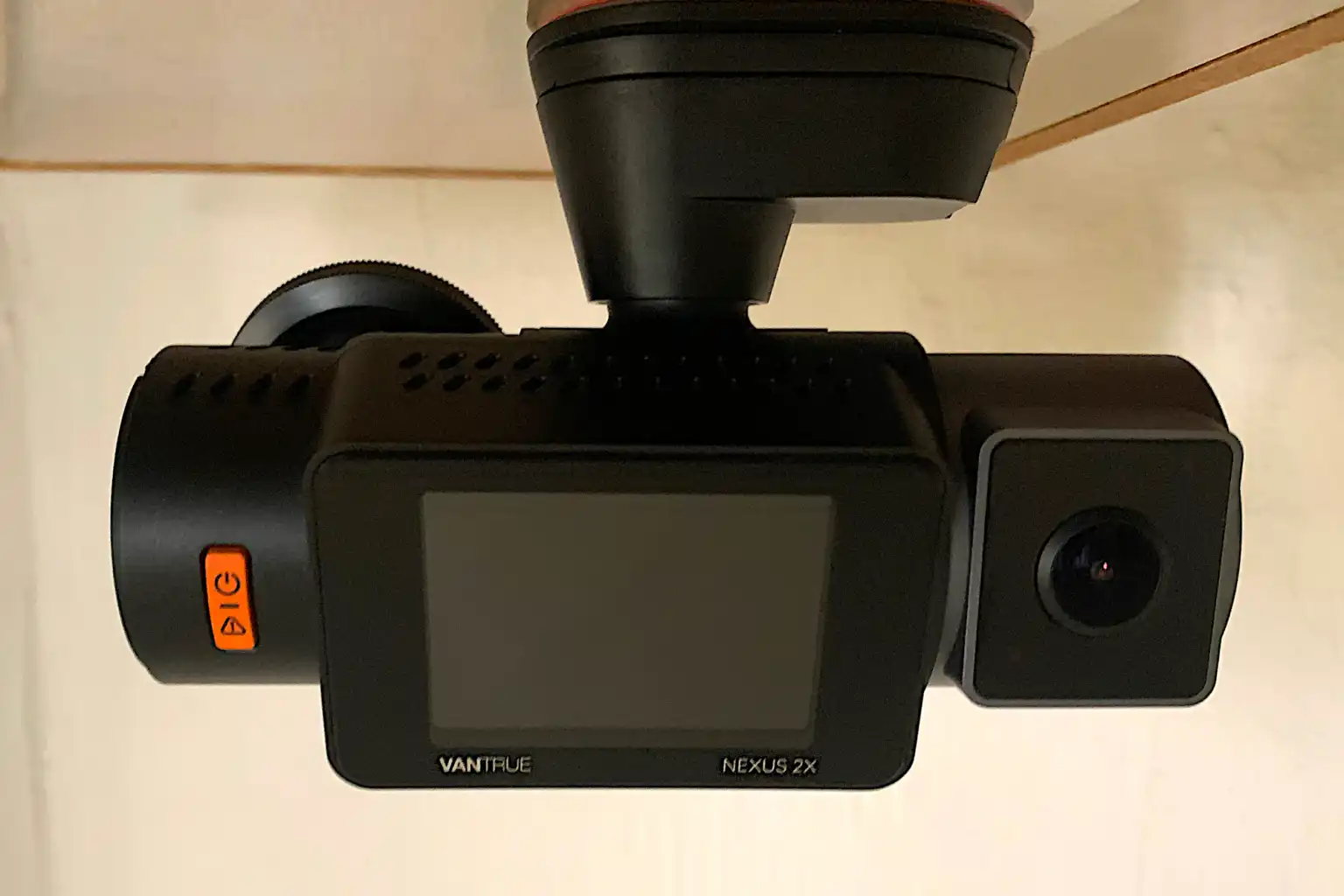The Nexus 2X is a dual-channel (front/interior) GPS-enabled dash cam with very good front captures and good interior cabin video. It comes ready for LTE connectivity for remote viewing and tracking via an auxiliary module (only available in the Americas) that Vantrue sells as an option. You must provide the SIM card and the service, which means slightly more hassle than with some LTE dash cams, but a lot more choice.

What are the Vantrue Nexus X2’s features?
The Nexus X2 is a 4.5-inch long, roughly cylindrical (with several squared faces) entity that’s about 2.5-inches at it’s deepest (the forward lens body). The interior camera is captive but rotates roughly 45 degrees up and down so you can adjust the interior coverage.
The left side of the camera is home to the Type-C power connector (with captive auxiliary port power cable) and an SD/TF card slot. The right side is bare. I was expecting a separate connection for the LTE, but the LTE unit connects to the power cable and passes through to the main camera. It too features a sticky mount so you can affix it near the dash cam.
If your not familiar, LTE-enabled dash cams allow you to check the status and location of your vehicle remotely, via the GPS and feed from the camera. Basically, it turns the unit into a GPS-enabled web/earth cam.
The Nexus 2X features a 2-inch color display on board with four buttons underneath for activating features and changing settings. It’s not touch, but the menus and options are logically laid out and generally easy to access. There’s also an orange power (long press)/lock video(short press) button obviously situated to the side. The color and location make the button very easy to spot and access when you’re in a hurry. I prefer it to the red that many vendors use, which is often so dark as to not stand out properly.
Of course, you could also simply make use of the Nexus 2X’s voice control and utter the phrase “Vantrue, lock video.” Easy-peasy.
The Nexus X2’s sticky mount is one of, if not the best in the business. It’s beefy and solid-feeling, mates easily with the dash cam magnetically, and adjusts in all directions. Not by a lot, mind you, but easily enough to obtain the perfect orientation for the front camera.
Both the forward and cabin cameras use a Sony STARVIS 2 IMX675 sensor. The front sports 165 degree field-of-view opticals, and 150 degrees in the interior. Maximum resolution for the front camera is 1944p (the default, which we used, is 1440p) and 1080p for the interior.
How are the Vantrue Nexus 2X’s captures?
The short answer is that the Nexus 2X delivers very good day and night front captures, and good interior day and night captures. There’s a noticeable difference between the external 1440p and the internal 1080p, but the latter is still of high enough quality to grab some detail out my MX-5’s small back window.
Uniquely for Vantrue, the Nexus 2X didn’t seem to need the polarizing filter that improves the daytime capture quality of many of its dash cams. Vantrue sent one, but I never used it. The downside to polarizing filters can be darkening night time video, forcing you to remove it or basically wear your sunglasses at night.
There’s a bit more detail available in the optional 1944p mode (the second image to follow), but it has the same horizontal 2560 resolution, which works out to a squarer 4:3 aspect ratio. Some may prefer the 2560x1444p shown below, which offers the more modern 16:9 ratio we’re all accustomed to.
Should you buy the Vantrue Nexus 2X?
If you want good captures, and LTE connectivity that lets you choose your own service — the Nexus 2X is a good choice. Actually, it’s the only roll-your-own-LTE dash cam I’ve tested, so put it at the head of that category for sure.
